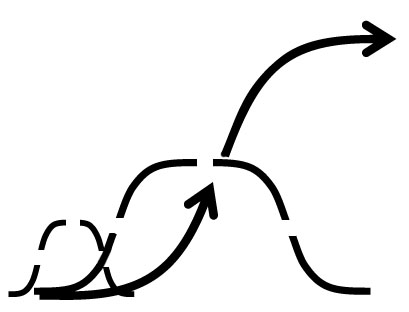There are quite a number of “systems of systems thinking”, that I broadly describe the history of in my entry in the Encyclopedia of the Earth on Complex Systems. Every science made up its own, for example, which are sometimes linked and sometimes not really linked much at all. The introduction to the “Natural Systems Theory” behind it, a scientific method for studying naturally occurring systems, is found on the research archive site. The subject could also be called “General Behavioral Economics” or for its focus on the complex development of local systems of organization serving as the working “capital” of nature and apparently all kinds of energy using systems, or a “General Systems Ecology” as another name for the same thing.
The thinking somewhat overlaps with “General Systems Theory” and “Complexity Theory” but doesn’t focus as those fields do on inventing theories for nature. The focus on theoretical models, that people have often quite ingeniously developed, if for creating a substitute way to represent physical behavioral systems. The study here is more focused on the organization and transformations of nature, the ones we cannot define. So it might then be called a “Real Systems Theory” or “Non-theoretical Systems Theory“. The focus is on studying actual individual systems of the natural world, in their own innate forms and locations. It still uses recorded information, but for study of where the information came from rather than how we can turn it into something else, using abstract models to represent it. Carefully defined abstract models are certainly used, …but mostly to help expose and clarify the quite different means and different patterns of organization found in the intermittent relationships we find systems around us formed by, and how they behave as wholes.
This change in thinking is a sometimes confusing problem, which also displays “systems thinking” (as a culture and language) as going through evolutionary stages of emerging forms, like the great eruption of new biological forms called the Cambrian Explosion. Here the struggle is to move from a “modeling” to a “learning” approach to the complex organizations of nature, and how that will settle will not be clear for a while. This site records but one example of the struggle it involves, but clearly one of the places “where the action is”, at present. ed 9/23/14
_______
Many “systems of systems thinking” represent the accumulation of an individual person’s work over decades, and may be original enough to not have apparent connections to other languages for how things work other than how they individually have learned to use them. So as a “discipline” Systems Thinking is a “silo” with lots of “micro-silos”. Being thrown into them is a little “sink or swim”, with little to grab onto.
Like most systems themselves, though, most people have some “starting point” for their organized way of thinking about systems. It might be the nesting of small operations/management units within large ones, for example, as you might find in studying how a business works. I look at those common units of organization as a “cybernetic body parts” to be use to help understand the observed systems around you. That treats systems thinking as a “learning process”, though, rather than as a a way to define the mechanisms of systems , though. Real systems work in more complex ways than our mental models can describe.
My main focus in on natural systems that are identifiable “self-managing units” of organization (natural systems). For them the “management” of the system becomes a role for the loops of relationships that are also the system’s “operations”, so operations and management are not separated, but the same. The loops of relationships define the “body” of its organization as a whole individual working unit. That definition by observation also provides an observable “natural boundary” to locate in the environment, and a way to define individual systems for research studies by their own unique shape and location.
Maybe the following summary would offer a kind of “life preserver” for the “sink or swim” task, that the somewhat unwieldy accumulation of my work presents. ;-) My approach starts with recognizing that growth, for a business, social or physical system, is itself a:
- a self-managing system for building whole systems,
- starting from a seed of organization
- using existing resources in an open environment
- that I can observe closely, and
- helps me pick out simple models of working parts
- to then better understand the full relationships of the things seen in their real contexts
- importantly for understanding the transition between growth and maturation
- when the system’s surplus resources change use
- from first developing internal relationships to then develop external relationships
- from first building the scale of the growing system
- and then to maturing its relationships

My materials are kind of scattered all over my site and blog.
PICS projecting images of complex systems
Chapters of whole system events
TEA total environmental assessment PDF slides
Blog: Reading Nature’s Signals
Intro: Open Systems Physics
HDS systems design science: Consulting services, Publication list
Proposal: Natural Principles for steering the global economy
My Influences general site Synapse9 and search tools
jlh
